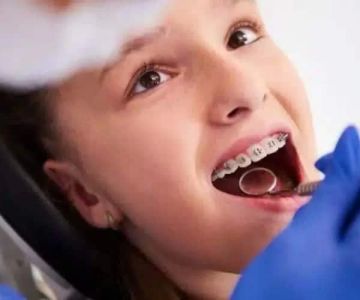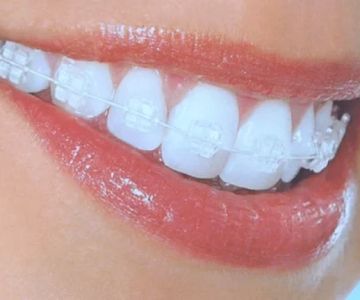When it comes to dental health, one common question that crosses the minds of many individuals is: Are occlusion problems hereditary? This query touches upon the deeper understanding of how genetics influence various health aspects, particularly dental conditions. Understanding whether your crowded teeth, open bite, or overbite are inherited can offer insights into the treatment and management options available to you. In the United States, many are keen to understand hereditary patterns since about 15% of the population experience some form of malocclusion, which often necessitates orthodontic intervention. This article delves into the genetic aspects of occlusion problems, examines scientific studies, and offers a perspective for individuals seeking insights on whether they have their ancestors to thank for their crooked smiles.
The Genetic Underpinnings of Occlusion Problems
Research indicates that occlusion problems can indeed have a hereditary basis. Studies demonstrate that certain genetic markers are linked to dental structure and jaw formation. This means traits such as tooth size, jawbone shape, and even the tendency towards misalignment can be passed down generations. A study published in the American Journal of Orthodontics and Dentofacial Orthopedics identified several genetic loci associated with dental malocclusion. The researchers found a notable correlation between these genetic markers and the aesthetic traits in dental and facial structures. However, it's also crucial to understand that environmental factors, such as diet and oral habits, can influence these genetic predispositions.
Environmental Influences: Nature vs. Nurture
While genetics play a significant role in determining dental occlusion problems, environmental factors shouldn't be underestimated. A child's oral habits, like thumb sucking and tongue thrusting, can exacerbate inherited tendencies toward dental misalignment. For instance, if someone is genetically predisposed to an overbite but avoids negative oral habits, their condition might be less severe compared to someone who engages in such habits. The interaction between these heredity factors and day-to-day behaviors frames the larger picture of dental health. Therefore, it’s not just about what genes are passed on – it's also about how these genes express themselves within differing environmental contexts.
Parental Patterns and Predictability
Given the hereditary nature of occlusion problems, looking at parental dental patterns can sometimes predict a child's oral health outcomes. Parents with a history of braces or other orthodontic treatments might notice similar traits in their children early on. This predictive nature of hereditary traits helps in early identification and management of potential malocclusion. Data from the American Dental Association suggests that consulting with an orthodontist when the first signs of occlusion problems appear can significantly improve outcomes, often reducing treatment time and complexity. Regular dental checkups can detect these inherited issues early, leading to more efficient orthodontic solutions.
The Role of Modern Orthodontics in Managing Hereditary Occlusion Problems
Today's orthodontic interventions have evolved to handle hereditary occlusion problems more effectively than ever before. Innovations such as 3D imaging and precision aligners, such as Invisalign, allow for customizable and less intrusive treatments tailored to an individual's genetic and environmental background. These advancements mean that even if occlusion problems have been passed down through generations, modern dentistry can offer solutions that are more efficient and visually comfortable. This is exemplified by successful cases documented across various orthodontic clinics, improving lives by restoring functional and aesthetic balance to patients' jaws and teeth.
Conclusion: Understanding and Acting On Your Genetic Blueprint
In summary, occlusion problems do have a hereditary component, influenced by both genetic and environmental factors. Understanding this can guide individuals in seeking preventative care and appropriate treatment early on. For those who notice patterns of dental issues in their lineage, proactive measures such as early orthodontic consultations are advised. The Dentistry Toothtruth website offers comprehensive resources on managing and understanding these conditions, ensuring individuals take informed steps towards their dental health. By embracing the preventive and corrective tools available today, you can overcome the hereditary challenges you might face, and maintain a healthy, functional smile for generations to come.




 Westgate Dental Arts
Westgate Dental Arts Coventry Family Dental
Coventry Family Dental Familia Dental
Familia Dental Dr. Daniel S. Fife, DDS
Dr. Daniel S. Fife, DDS Dentistry At Suburban Square: Michael I. Wollock, DMD
Dentistry At Suburban Square: Michael I. Wollock, DMD Comfort Care Dental
Comfort Care Dental The Importance of Oral Health Education During Pregnancy for a Healthy Pregnancy
The Importance of Oral Health Education During Pregnancy for a Healthy Pregnancy Why Skipping Dental Checkups Can Lead to Bigger Oral Health Problems
Why Skipping Dental Checkups Can Lead to Bigger Oral Health Problems Advantages of Porcelain Dental Restorations
Advantages of Porcelain Dental Restorations Best Tips for Brushing Your Teeth Properly for Healthy Gums: Essential Techniques for Oral Health
Best Tips for Brushing Your Teeth Properly for Healthy Gums: Essential Techniques for Oral Health How Can Diabetes Cause Tooth and Gum Problems? Preventing and Managing Oral Health Issues
How Can Diabetes Cause Tooth and Gum Problems? Preventing and Managing Oral Health Issues Healthy Habits for Promoting Good Oral Health and Hygiene: Tips for a Healthy Smile
Healthy Habits for Promoting Good Oral Health and Hygiene: Tips for a Healthy Smile